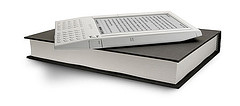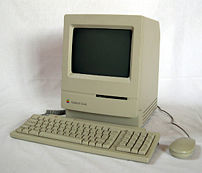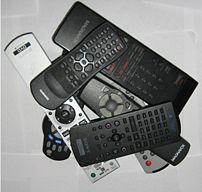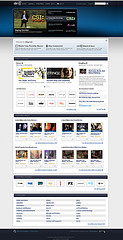
- Image via CrunchBase
After our colleagues at Flight Wisdom signed up for a Twitter account to help people follow their blog, we decided to see how it went for them. Within days of signing up, users started to flow in, although some of them were already readers. Not only that, but by following other similarly themed Twitter accounts, they were able to get more up-to-the-minute news. If you haven’t already, check out Flight Wisdom.
So, we are proud to announce that we’ve set up our own Twitter account, GadgetWisdom. Not only will it automatically post a tweet when we post a blog entry, but it allows us to post our random thoughts when we don’t have time or yet enough material for a full post.
In order to keep up, we’ve integrated Twitter into our copy of Pidgin. Pidgin is a multi-protocol instant messenging client, and with an add-on, you can add Twitter monitoring and posting to Pidgin. Anyone we are following will pop up in the Gadget Wisdom window in our taskbar. So, it will help us keep better track of what is going on to talk about.
So, we ask you, what Tech Twitter Accounts do you think we should follow?

![Reblog this post [with Zemanta]](http://img.zemanta.com/reblog_e.png?x-id=7dcfe0ac-cbec-4a96-b7da-82d83aef6fe2)


![Reblog this post [with Zemanta]](http://img.zemanta.com/reblog_e.png?x-id=1a20142d-d75a-4944-a14c-864798a5c6d4)
![Reblog this post [with Zemanta]](http://img.zemanta.com/reblog_e.png?x-id=d2dcd2da-7c75-420d-8708-704712f57c37)


![Reblog this post [with Zemanta]](http://img.zemanta.com/reblog_e.png?x-id=46b6c350-687f-42ac-8bff-6551ce28c938)


![Reblog this post [with Zemanta]](http://img.zemanta.com/reblog_e.png?x-id=673a23d4-db6d-4e64-aa7a-0df3dce274ba)


![Reblog this post [with Zemanta]](http://img.zemanta.com/reblog_e.png?x-id=6e7c5e55-ef2f-47b3-9a8a-40c5b45fbc6f)


![Reblog this post [with Zemanta]](http://img.zemanta.com/reblog_e.png?x-id=514511e5-6f36-4f52-917a-6c6f1a32aba6)


![Reblog this post [with Zemanta]](http://img.zemanta.com/reblog_e.png?x-id=a3d0c5d0-e8fe-4b80-a250-da8f4847005e)


![Reblog this post [with Zemanta]](http://img.zemanta.com/reblog_e.png?x-id=74996443-dd54-493a-a7b2-7c3e79c73fd1)


![Reblog this post [with Zemanta]](http://img.zemanta.com/reblog_e.png?x-id=ce2a1855-f09e-4654-b7ce-47df822eaf63)